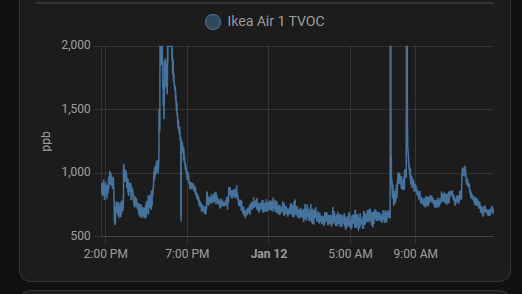I’m new here, and just got my AirGradient in the mail yesterday. I’m glad I found this thread, though, as I was trying to understand the VOC readings!
I’ve got less than 24 hours of data so far, but something I noticed this morning after waking up is that the VOC and CO2 both spiked massively this morning, and I was surprised how high VOC went because I thought it was supposed to be a 1 to 500 scale… But mine spiked to over 700 a few minutes ago, and it’s sitting in the 600s now. I’m unclear how that is possible with the sensor scale as described in the PDF y’all linked to earlier 
I’m also really wondering about some sort of calibration, though. I thought it was supposed to come calibrated from the factory and tested, but this morning alongside the VOC spike the CO2 reading also went up to over 1400ppm. That seems crazy high, but we do have a pretty well sealed house I think and my main reason for getting this was to check and see if we were exposing ourselves to dangerously high CO2 levels. Now, though, I don’t know if I can trust these readings 

 ) and landed here:
) and landed here: 
